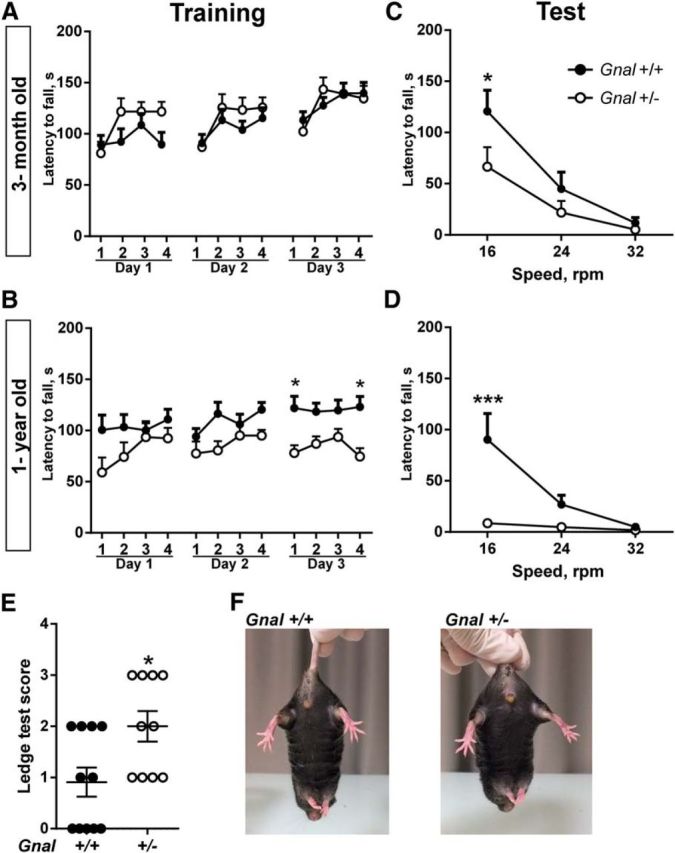Figure 2.

Motor coordination impairment in Gnal+/− and WT mice. A, Training of 3-month-old mice (n = 13–19 animals per group) with accelerating rotarod (4–40 rotations per min, rpm) for 3 consecutive days. Mice performance improved with training, but no significant difference was found between Gnal+/− and Gnal+/+ mice. Two-way ANOVA: sessions, F(11,341) = 9.55, p < 0.0001; genotype, F(1,31) = 0.63, p = 0.43; interaction, F(11,314) = 1.64, p = 0.08. B, The same animals were tested again as in A at the age of 1 year. Gnal+/− animals showed learning impairment. Two-way ANOVA: genotype, F(1,22) = 6.5, p < 0.05; session, F(11,242) = 2.6, p < 0.01; interaction, F(11,242) = 1.6, p = 0.1. One day after the last training session, 3-month-old (C) and 1-year-old mice (D) were tested with rod rotation at 3 fixed speeds. Gnal+/− animals stayed less time on the rod than WT controls at 16 rpm speed. C, Two-way ANOVA: genotype, F(1,30) = 2.7, p = 0.11; speed, F(2,60) = 29, p < 0.0001; interaction, F(2.60) = 2.2, p = 0.12. D, The deficit of 1-year-old Gnal+/− mice was more pronounced than at 3 months of age at 16 rpm speed. Two-way ANOVA: genotype, F(1,22) = 9.3, p < 0.01; speed, F(2,44) = 9.6, p < 0.001; interaction, F(2,44) = 7.1, p < 0.01. A–D, Data are shown as means ± SEM. Post hoc comparisons were done with Sidak's multiple-comparisons test. E, Reduced score of motor coordination of Gnal+/− mice in ledge test compared with WT controls (n = 10–11 animals per group, means ± SEM. are indicated, Student's t test with Welch's correction, t = 2.6, p < 0.05). F, No clasping of the paws was observed in WT and Gnal+/− mice when suspended by the tail. *p < 0.05; **p < 0.01; ***p < 0.001.
